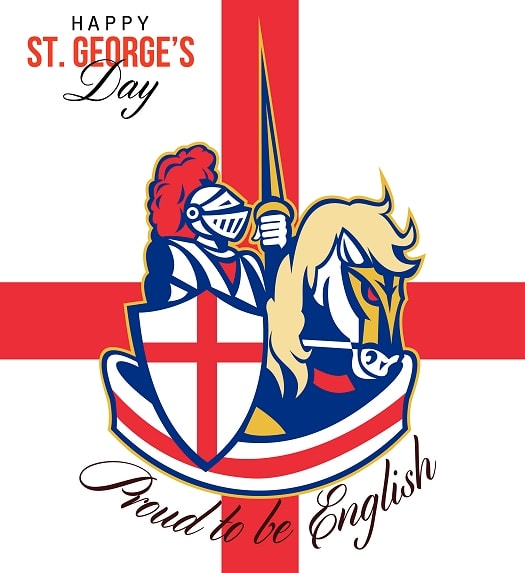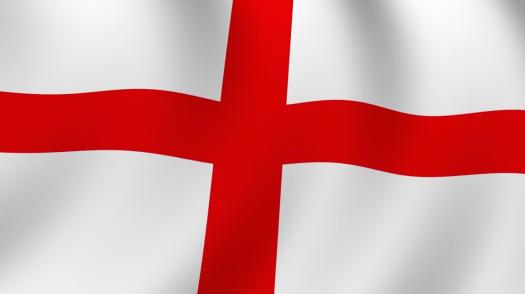St. George's Day - Celebrated on the 23rd April
Every nation has it's own Patron Saint to help it out in times of need and danger. St David is the patron saint of Wales, St Andrew of Scotland and St Patrick of Ireland, with St George being the patron saint of England. But who was this man that became the much loved legendry dragon slaying Patron Saint of England?
Just who was St. George?
There's not a lot known about St. George but he was born a Christian in A.D. 270 (3rd Century) at a place thought to be Cappadocia which is now Eastern Turkey.
He travelled with his mum to Palestine where he became a Roman soldier working up the ranks to achieve the rank of Tribunus Militum, eventually becoming a personal guard to the Emperor Diocletian.
He later protested against his pagan leader's (Emperor Diocletian) persecution of Christians and resigned from his post. His actions resulted in him being imprisoned and tortured for his rebellion.
St George stayed true to his beliefs and as a consequence Diocletian had him dragged through the streets of Nicomedia on 23rd April 303 Ad and then beheaded.
St. George was buried in the town of Lod in Israel and his head was later taken to Rome where it was interred in the church dedicated to him.
The emperor's wife was so inspired with St. George that she also became a Christian and was also executed for her faith.

The council of Oxford declared in 1222 that the 23rd April would be St. George's Day but it was not until 1348 that St. George became the Patron Saint of England. King Edward III made him the Patron Saint of England when he formed the Order of the Garter in St. George's name in 1348.
In 1415, St. George's Day was established as a national feasting day and a holiday. St. George's Day was as popular as Christmas but with the union with Scotland on May 1, 1707 the tradition waned and by the end of the 18th Century was not celebrated as a national holiday any more.
St George is the Patron Saint of a number of other places, such as Georgia, Greece, Ethiopia, Portugal, Bulgaria and Russia as well as the Patron Saint of lepers, syphilis, herpes, shepherds, knights, butchers, scouts, archers, equestrians and farmers.
Celebrations today
The customs of St. George's Day was to wear a red rose in one's lapel and to fly the St. George flag which consists of a red cross on a white background. In churches across the nation the hymn 'Jerusalem' written by the poet William Blake is a popular song to sing on the Sunday closest to 23rd April.
Most shops and business's are open for business as it's not a national holiday anymore. Recently there's been a surge in the popularity of St. George's Day and petitions lodged with reinstating it back as a national holiday.

St George and the dragon
The tale dates back over a 1,000 years and is said that a fierce dragon made it's nest next to the only fresh water spring near the town of Silene in Libya. When the townsfolk came to collect water they disturbed the dragon and so offered it 2 sheep a day as a means of distraction.
After many years of offerings there came a time when no sheep were left to give so the king of the town decided to choose a maiden as an offering. The town selected their maiden by drawing lots but when eventually the lot drawn was for the town's princess the king tried to bargain his way out of it,
but the townspeople were adamant that she should be delivered to the dragon just as many of their children had been. Although the town's king protested his daughter Cleolinda was offered to the dragon. Luckily for Cleolinda as she was being offered to the dragon a knight from the crusades happened to be riding by on his beautiful white stallion.
The knight was St. George and was not about to let this beautiful princess be devoured by the dragon. He dismounted and fought the dragon on foot protecting himself with the sign of the cross. After a long battle St. George was victorious and slayed the beast saving the princess from certain death.
The townsfolk of Silene were so grateful that St. George had rid them of their dragon that they abandoned their pagan believes and converted to Christianity.

The St. George Cross
The St. George cross is also England's national flag and forms part of the Union Flag, the national flag of the United Kingdom of Great Britain and Northern Ireland. During the time of the crusades around the 1100s and 1200s, the St. George cross was used as part of the uniform worn by English knights. The St. George cross has now been adopted by English sporting fans and is regularly seen at football, cricket and rugby games. Fans also paint their faces with the symbol and have it on scarves shirts and flags.
